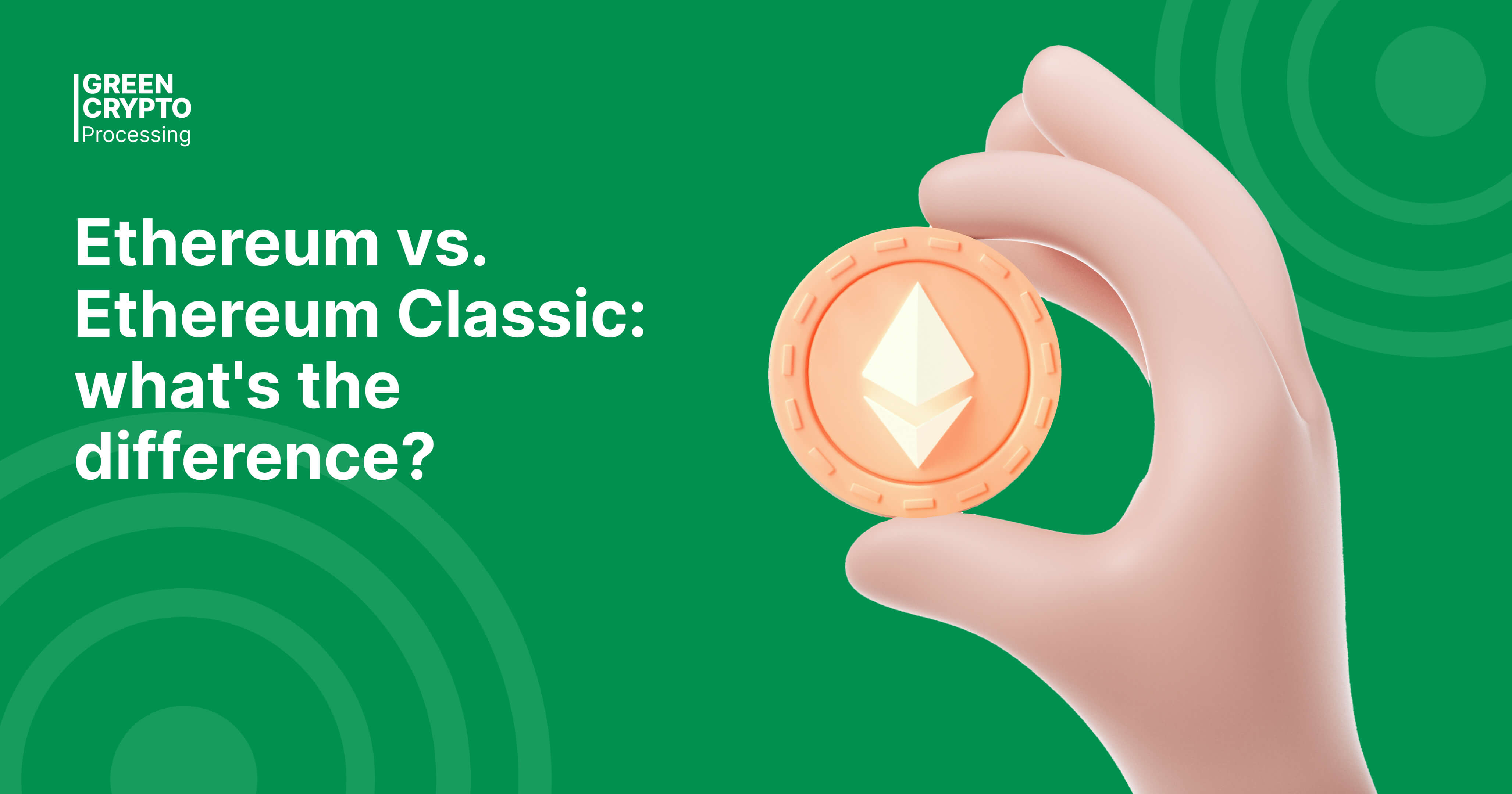Blog
Ethereum and Ethereum Classic are two independent blockchain networks that originated from the same platform but have taken different paths of development. Ethereum Classic has retained the original blockchain principles, while Ethereum has adapted to new conditions, undergoing significant changes. Below we discuss the key differences between these networks as well as their future prospects.

The origins of Ethereum and Ethereum Classic
Ethereum and Ethereum Classic share a common origin — they evolved from the original Ethereum platform, an open source decentralised blockchain network designed for the development of smart contracts and decentralised apps (dApps). The split into two networks came after a key event in 2016 known as The DAO Hack.
The DAO, a decentralised autonomous organisation, ran one of the most notable crowdfunding campaigns in cryptocurrency history, raising a significant amount of ETH. However, a vulnerability in The DAO's code led to the hack and the loss of about 3.6 million ETH, which was approximately $50 million at the time.
This incident caused a hard fork of the Ethereum network. The new blockchain, in which the situation with The DAO Hack was fixed, was named Ethereum. The original network, which remained unchanged, became known as Ethereum Classic.
Ethereum Classic: staying true to the original principles
Ethereum Classic (ETC) is a continuation of the original Ethereum platform created in 2015. It adheres to the concept “Code is Law”, which implies that a decentralised network is regulated solely through its underlying code. This principle is considered the most important element of a decentralised system. Ethereum Classic has its own cryptocurrency, ETC, and has an issue limit of about 210.7 million ETC. The network also retains the original Proof-of-Work consensus mechanism.
Ethereum: a new path of development
Ethereum (ETH), unlike Ethereum Classic, has undergone significant changes since the hard fork. It uses its own cryptocurrency, ETH, which, unlike ETC, has no issuance limit. Ethereum has also moved away from the Proof-of-Work consensus mechanism to a new system called Proof-of-Stake. Ethereum is one of the largest blockchains on the market and supports a wide range of apps including financial services, gaming and NFT.
Ethereum vs. Ethereum Classic
Ethereum and Ethereum Classic have their own unique features and offer functionalities that meet the different needs of users. Ethereum Classic maintains the original principles of the platform, while Ethereum has evolved to meet new challenges and market demands. Both approaches have their advantages, and only time will tell which one will prove to be more resilient and sought-after in the rapidly changing world of blockchains.